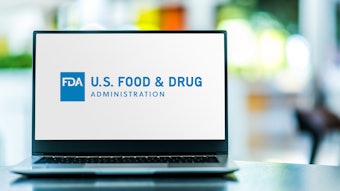On Dec. 24, 2014, the Korean Ministry of Food and Drug Safety (MFDS) passed Regulation 2014-20, the Regulation on Organic Cosmetics Standards,1 which will go into effect on June 24, 2015. On its website, the MFDS stated this regulation was passed to: prevent the flood of incorrect organic products into Korea, provide consumer education, create criteria for organic products, and ensure a quality supply of organic products into Korea.
This regulation recognizes four categories of organic ingredients and two categories of approved processing methods. In addition, it defines other approved and unapproved elements of organic products, which are defined and outlined herein.
Four Pillars of Organic Ingredients
The four categories of organic ingredients outlined by the MFDS include: plant, animal-derived, mineral and certified organic ingredients.
Plant ingredients: This category includes unprocessed plant ingredients including those of marine (algae) origin, in addition to those processed using an approved physical or chemical/biological method.
Animal-derived ingredients: Similar to plant ingredients, this category includes unprocessed animal ingredients such as eggs, milk and milk proteins, as well as animal by-products made using an approved physical or chemical/biological processing method. Cells, tissues and organs of animals are excluded from this category.
Mineral ingredients: Minerals formed naturally by geological processes or processed using approved physical methods are included in this category, as well as 84 accepted mineral-derived ingredients processed using a chemical/biological method. These 84 minerals can be found in Appendix I of the regulation; they include many mineral-derived colorants. Fossil fuels are excluded from this category.
Certified organic ingredients: This category includes organic agricultural fishery goods processed using an approved physical method and/or certified organic by a body that follows government standards. Also included are ingredients certified organic by bodies registered with the International Federation of Organic Agricultural Movements (IFOAM), and processed using an approved physical method.
Organic Cosmetic Standards
In addition to the organic ingredients outlined, an organic product may contain water; but at least 10% of the product must be organic ingredients. This 10% organic content is calculated based on the weight ratio. In other words, if an extract mixture is used at 1% but is made up of 25% organic extract plus 74% water plus 1% of an approved preservative, only 0.25% can be counted toward the organic content.
In principle, synthetic ingredients cannot be used unless they have no natural substitute. These synthetics include: natural tocopherol extracted using hexane; denatonium benzoate; dehydroacetic acid salts; lecithin; benzoic acid salts and esters; benzyl alcohol; salicylic and sorbic acid salts; alkyl betaine; isopropyl alcohol; xanthan gum; carrageenan; tetrasodium glutamate diacetate; and tertiary butyl alcohol (TBA).
Furthermore, as noted in Appendix 4, the ingredients used in organic products may not contain specific contaminants, including trace heavy metals, hydrocarbons, agricultural pesticides, dioxins, radioactive materials, genetically modified organisms and by-products, residual animal medicines (steroids), plant pollutants (nitrates), mycotoxins and nitrosamines.
Processing and Manufacturing
Various physical, chemical and biological processing methods are permitted, as listed in Appendix 3 of the regulation. Most are mechanical, involving steam or natural solvents such as water, carbon dioxide and glycerin. Example physical processes are distillation, extraction, maceration, infusion and degumming/de-oiling. Approved chemical/biological methods are alkylation, esterification, fermentation and hydrogenation. Forbidden processing methods include bleaching/deodorization; irradiation; sulfonation; the use of ethylene, propylene or other alkylene oxides; and the use of mercury and formaldehyde.
In addition to these requirements for organic products in Korea, manufacturers will have added record-keeping requirements: all substantiation documents for products must be maintained for either three years or one year after the expiration date/imported date, whichever is longer.
Lastly, two key manufacturing practices must be followed for organic products. First, facilities must be sanitized using only the approved sanitizers listed in Appendix 5, to prevent cross-contamination. Also, organic and other ingredients must be clearly labeled for identification, and may not be stored in polyvinyl chloride or polystyrene foam containers.
References
- www.mfds.go.kr/eng/index.do (Accessed Mar 23, 2015)







!['I think the biggest game-changer about [MoCRA's] ... requirement for GMPs is how it changes what it means to be adulterated,' Brandi Reinbold, senior manager of global certification for NSF International, said in this sponsored videocast. Register now to watch and learn more. It's free.](https://img.cosmeticsandtoiletries.com/files/base/allured/all/image/2023/11/NSF_Intl_Thumbnail.6554efdc29816.png?auto=format%2Ccompress&fit=crop&h=191&q=70&rect=275%2C70%2C1328%2C748&w=340)


